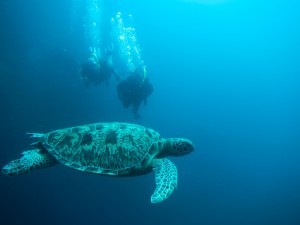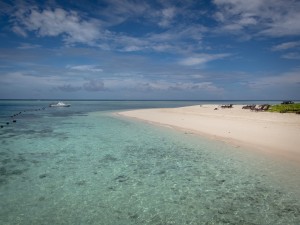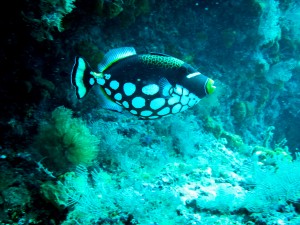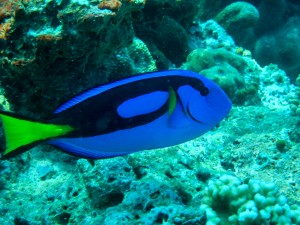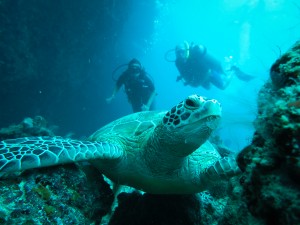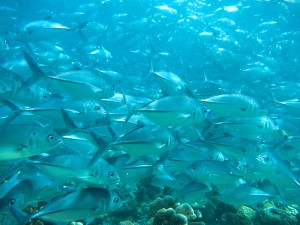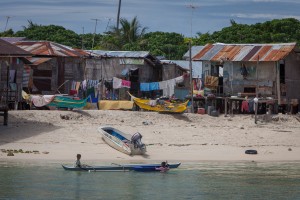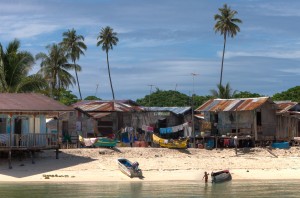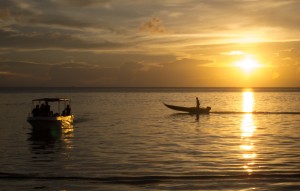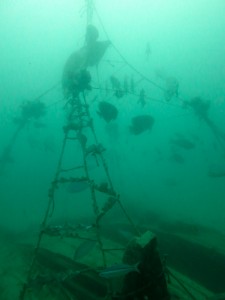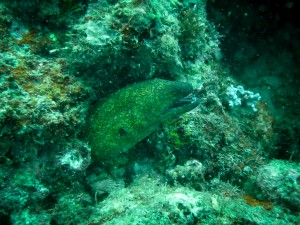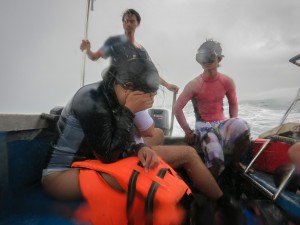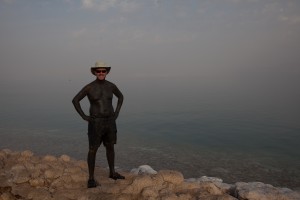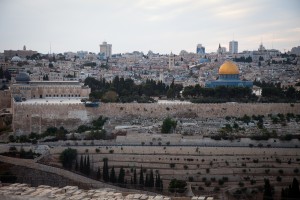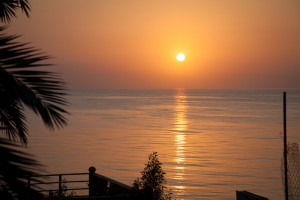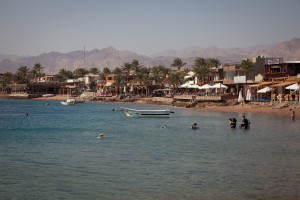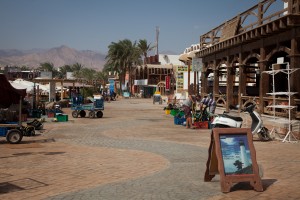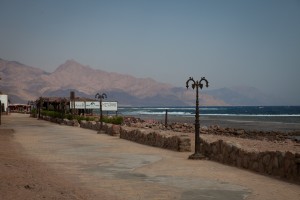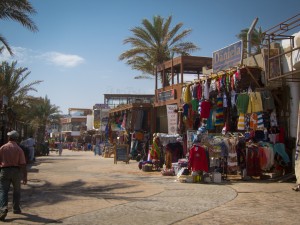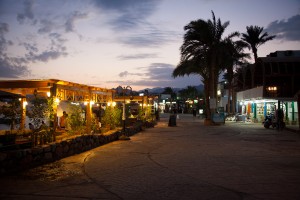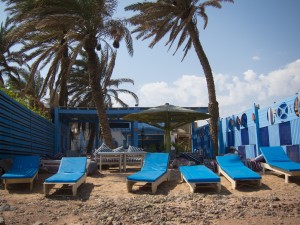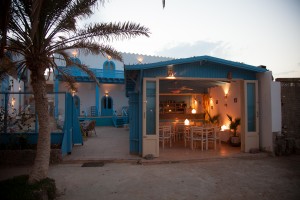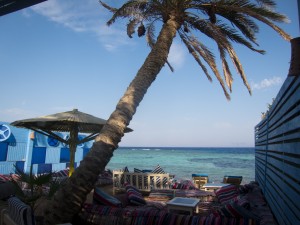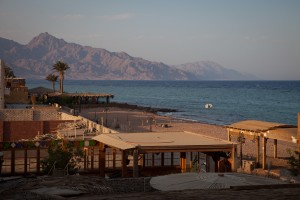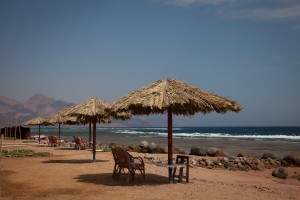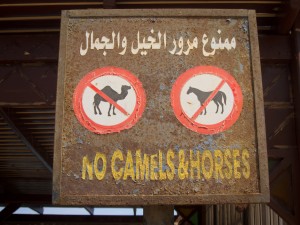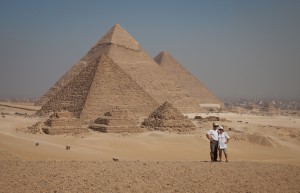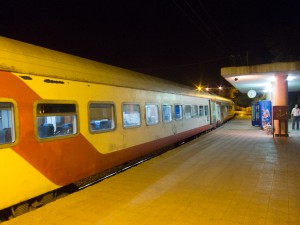 We’re on our way to Thailand, and have been for about a month. The problem is that we keep getting distracted with other interesting places along the way and our side trip to Singapore was no exception. With mixed reviews about Singapore – some rave about it while others deplore how Westernized the city has become – we decided to check it out for ourselves and are we ever glad that we did.
We’re on our way to Thailand, and have been for about a month. The problem is that we keep getting distracted with other interesting places along the way and our side trip to Singapore was no exception. With mixed reviews about Singapore – some rave about it while others deplore how Westernized the city has become – we decided to check it out for ourselves and are we ever glad that we did.
With a population of just over 5 million sprawled over 710 square kilometres squeezed onto an island, Singapore is the capital of the country by the same name which is comprised of 63 islands of varying sizes. Singapore is sandwiched between Malaysia to the north and Indonesia to the south. We travelled from Kuching to Singapore by air on a very cheap AirAsia flight (about $60 CAD each). But the savings ended there, as we knew they would, having been forewarned that Singapore is a very expensive city to visit.
 This probably wasn’t the place to decide we have had enough of hostel living, but that’s how we felt so we stepped up our accommodations a notch and we splurged on a room in the Hotel Re, a 4 star boutique hotel decked out in a 70’s retro theme. For reasons unknown to us, we were upgraded to a deluxe room with city views on the 10th floor. Our room was large by any standard, but especially so for Singapore, not to mention the modern and spacious ensuite bathroom. Maybe we’ve been living in hostels for too long, but we loved everything about this room and enjoyed every minute of our stay there: the wall-to-wall windows overlooking the city, the complimentary snacks and drinks that were refilled each day, the cotton slippers and robes, a modern 42 inch flat screen TV with English channels, good quality linens and pillows on the beds. Heck, we even had our own night table and lamp – we were living it up here in Singapore. Located on the edge of Chinatown, within a ten minute walk to the Metro station, and a two minute walk to the bus stop, it was easy to get around on foot or with public transportation.
This probably wasn’t the place to decide we have had enough of hostel living, but that’s how we felt so we stepped up our accommodations a notch and we splurged on a room in the Hotel Re, a 4 star boutique hotel decked out in a 70’s retro theme. For reasons unknown to us, we were upgraded to a deluxe room with city views on the 10th floor. Our room was large by any standard, but especially so for Singapore, not to mention the modern and spacious ensuite bathroom. Maybe we’ve been living in hostels for too long, but we loved everything about this room and enjoyed every minute of our stay there: the wall-to-wall windows overlooking the city, the complimentary snacks and drinks that were refilled each day, the cotton slippers and robes, a modern 42 inch flat screen TV with English channels, good quality linens and pillows on the beds. Heck, we even had our own night table and lamp – we were living it up here in Singapore. Located on the edge of Chinatown, within a ten minute walk to the Metro station, and a two minute walk to the bus stop, it was easy to get around on foot or with public transportation.
 Singapore is renowned for its urban sprawl and is often criticized for the resulting loss of primary rainforest so we were impressed to see so much green space every where we went. The 183-acre Botanic Garden was a surprising oasis of both manicured gardens and wild rainforest located in the heart of the city. Within the Garden, The National Orchid Garden is home to the world’s largest collection of orchids, many of which were in bloom this time of year. Imagine, we actually saw flowers in bloom for a change! This free public garden is a popular place to go for a run or just a meander. The entrance fee to the Orchid Garden is $5 SGD ($1 SGD = $0.80CAD) and is probably the best bargain in town. If you ever find yourself in Singapore, go visit this garden – you won’t be disappointed. Our only regret was that we didn’t have more time to explore. We spent 6-7 hours there, and barely scratched the surface.
Singapore is renowned for its urban sprawl and is often criticized for the resulting loss of primary rainforest so we were impressed to see so much green space every where we went. The 183-acre Botanic Garden was a surprising oasis of both manicured gardens and wild rainforest located in the heart of the city. Within the Garden, The National Orchid Garden is home to the world’s largest collection of orchids, many of which were in bloom this time of year. Imagine, we actually saw flowers in bloom for a change! This free public garden is a popular place to go for a run or just a meander. The entrance fee to the Orchid Garden is $5 SGD ($1 SGD = $0.80CAD) and is probably the best bargain in town. If you ever find yourself in Singapore, go visit this garden – you won’t be disappointed. Our only regret was that we didn’t have more time to explore. We spent 6-7 hours there, and barely scratched the surface.
 During December, Orchard Road, a world renowned shopping Mecca that attracts thousands of visitors each year, is lit up with a dazzling display of Christmas lights. The street has been declared to have the “World’s Best Holiday Lights” by Frommer’s, and to be one of “The Top Ten Christmas Markets of the World” by Lonely Planet, well-deserved accolades in our opinion. It’s best to visit after 7:00 pm when the lights go on!
During December, Orchard Road, a world renowned shopping Mecca that attracts thousands of visitors each year, is lit up with a dazzling display of Christmas lights. The street has been declared to have the “World’s Best Holiday Lights” by Frommer’s, and to be one of “The Top Ten Christmas Markets of the World” by Lonely Planet, well-deserved accolades in our opinion. It’s best to visit after 7:00 pm when the lights go on!
 Throughout our three days, we wandered through the various neighbourhoods like Chinatown and Little India, visited temples and mosques, and learned about the rich cultural history of this fascinating city. It is indeed very Westernized in many ways, but this was something we enjoyed, feeling more at home here than we have anywhere else in a while. For example, we stumbled upon a grocery store that reminded us of the Waitrose chain we shopped at in the UK last summer; it even carried that brand of products. It was just so comforting to see products and food that we recognized for a change. What can I say, we’ve been travelling a long time, and sometimes we miss what is familiar.
Throughout our three days, we wandered through the various neighbourhoods like Chinatown and Little India, visited temples and mosques, and learned about the rich cultural history of this fascinating city. It is indeed very Westernized in many ways, but this was something we enjoyed, feeling more at home here than we have anywhere else in a while. For example, we stumbled upon a grocery store that reminded us of the Waitrose chain we shopped at in the UK last summer; it even carried that brand of products. It was just so comforting to see products and food that we recognized for a change. What can I say, we’ve been travelling a long time, and sometimes we miss what is familiar.
The cleanliness throughout the city was notable too and understandable when we later learned there are stiff penalties for littering – $500 SGD – strictly enforced. Imagine, education and strong deterrents work! We also noticed there was absolutely no graffiti anywhere, not even in the Metro stations. The city’s recent prosperity and dense urbanization has resulted in some pretty incredible architecture, yet the city felt spacious and uncrowded, unlike other large urban centres we have been to lately.
In short, we loved Singapore and could even imagine ourselves living there for a while. It was definitely a worthwhile side trip.
 The island of Penang was our final stop before heading to Thailand. Georgetown had been described as a must-see city with its rich colonial heritage and architecture to match. Besides, we could get our Thai Visa from the Thai Consulate in Penang so we could kill two birds with one stone (see travel tip below). We booked a couple of nights at the lovely Hotel Penaga located right on the edge of the historic district and a few nights at the 4 star Flamingo on the Beach hotel which was located close to Feringgi Beach, another popular destination. Still not in the mood for hostel living, we’re living it up a bit (and enjoying every second I might add) with these nicer hotel choices.
The island of Penang was our final stop before heading to Thailand. Georgetown had been described as a must-see city with its rich colonial heritage and architecture to match. Besides, we could get our Thai Visa from the Thai Consulate in Penang so we could kill two birds with one stone (see travel tip below). We booked a couple of nights at the lovely Hotel Penaga located right on the edge of the historic district and a few nights at the 4 star Flamingo on the Beach hotel which was located close to Feringgi Beach, another popular destination. Still not in the mood for hostel living, we’re living it up a bit (and enjoying every second I might add) with these nicer hotel choices.
 Hotel Penaga – One of the nicest places we’ve stayed in a while!
Hotel Penaga – One of the nicest places we’ve stayed in a while!
Views from our 8th floor room at the Flamingo on the Beach resort.
 Georgetown had its charm but we found ourselves wondering what all the fuss was about. Maybe we’ve seen too much of Malaysia because honestly, this city didn’t look much different from the other places we’ve seen already. Every town in Malaysia has a “Little India” and a “Chinatown” as well as temples, mosques, and colonial buildings, reminders of its past history as a British colony.
Georgetown had its charm but we found ourselves wondering what all the fuss was about. Maybe we’ve seen too much of Malaysia because honestly, this city didn’t look much different from the other places we’ve seen already. Every town in Malaysia has a “Little India” and a “Chinatown” as well as temples, mosques, and colonial buildings, reminders of its past history as a British colony.
Perhaps our enthusiasm for Penang was hampered because we were distracted, and increasingly frustrated trying to figure out where to go in Thailand. Our plan was to find a nice, cheap little place on a quiet beach where we could sit tight for a month or so. But it was not to be. This is high season in Thailand, and Christmas is probably the worse time to visit. It seemed everything was booked solid, and what was available, was ridiculously overpriced for what you got. Not to mention how crowded everything was going to be. Our lovely beach fantasy was quickly swept out to sea! Now what?
We spent a lot of time researching our options but we kept coming up with nothing. It turns out this is the most popular time to visit Thailand, and this year in particular, Thailand is experiencing a surge in tourism. That’s great for Thailand, but not so good for us. This is definitely one of the down sides of not planning ahead – sometimes, especially during peak times, you can find yourself shit out of luck. Finally, we decided we would skip the beaches for now and head up to Chiang Mai in the north where we would look for an apartment. We both want to settle down in one place for a month or two to take a break from travelling and to spend some time focusing on a couple of projects we have in mind.
 Once our destination was decided, all we needed to do was book our train tickets to Bangkok and away we could go. Naively, we thought we could purchase our tickets a day or two ahead which is generally true but not in high season. When we arrived at the ticket office, the lady practically laughed at us – the train was booked solid for the next two weeks! So how were we going to get to Thailand? Back to our hotel for more research, and a request to the hotel to stay another day to give us time to sort out our transportation.
Once our destination was decided, all we needed to do was book our train tickets to Bangkok and away we could go. Naively, we thought we could purchase our tickets a day or two ahead which is generally true but not in high season. When we arrived at the ticket office, the lady practically laughed at us – the train was booked solid for the next two weeks! So how were we going to get to Thailand? Back to our hotel for more research, and a request to the hotel to stay another day to give us time to sort out our transportation.
We had two options – bus or plane and in the end we opted for both. The bus trip would take more than two days including two overnight bus rides. And there were no direct flights either. The best we could find (and it wasn’t cheap) was with a 10 hour stop-over in Bangkok. So we decided to fly direct to Bangkok (1.5 hours) and then take the overnight bus from Bangkok (9 hours). With our transportation figured out, we enjoyed our final day in Penang hanging out by the pool and the beach. Thailand, here we come!
Travel Tip: Getting a Thai Visa while in Penang is super easy. You will need your passport, two standard passport photos, a photocopy of your passport and 110 ringgits (about $35 CAD). No need to fill out the Visa application form in advance as they will give you one when to complete when you arrive. You can even get your passport photos (20 ringgits for 4 photos) and have your passport photocopied (2 ringgits) from the guy working out of his car turned office just outside the Consulate gates. Or you can go to the Komtar shopping complex in Georgetown and get your passport photos and photocopy there (12 ringgits for 4 photos). But be sure to have enough money with you as the Consulate is located in a suburban area where there are no ATM machines.
The Royal Thai Consulate is located in the suburbs at: 1 Jalan Tunku Abdul Rahma which is a little out of the way but it is still easily accessible by bus. Take bus 101 in either direction (from Georgetown to Feringgi Beach, or vice versa) and get off at the corner of Jalan Burma and Jalan Cantonment. Tell the bus driver you are going to the Thai Consulate – just about everybody knows where it is. If you need money, get it from one of the many ATMs in this area as there are no ATMs near the Consulate.
It’s a pleasant 20 minute walk along Jalan Cantonment to Jalan Tunku Abdul Rahma where you turn right and then left at the first street. The Consulate is on the right hand side of the street, opposite a school. The roads are well signed, but the Consulate isn’t. Just follow these directions and you should find it without too much trouble. Of course, you can just take a taxi which will probably cost about 25 ringgits each way. But it’s much cheaper by bus – only 1.40 ringgit each way. Or you might get lucky like we did when we asked a guy how to get to the Consulate from where the bus deposited us on Jalan Burma and he gave us a drive there.
When you arrive at the Consulate, you will be asked to sign in at the guard desk where they check that you have everything you need for your application. You are then directed to another wicket where you are given the blank application form. After completing the form, you submit it along with your passport, photos, passport copy and the fee. You are given a receipt and told to return at 3:30 in the afternoon at which time you simply line up and collect your passport which now has a 60-day single entry Thai Tourist Visa pasted into it. Note that you cannot get a multiple entry visa from this Consulate.
If you’re applying for anything other than a tourist visa, you may want to verify that it is possible at this Consulate as our experience is limited to getting a tourist visa only.


















































